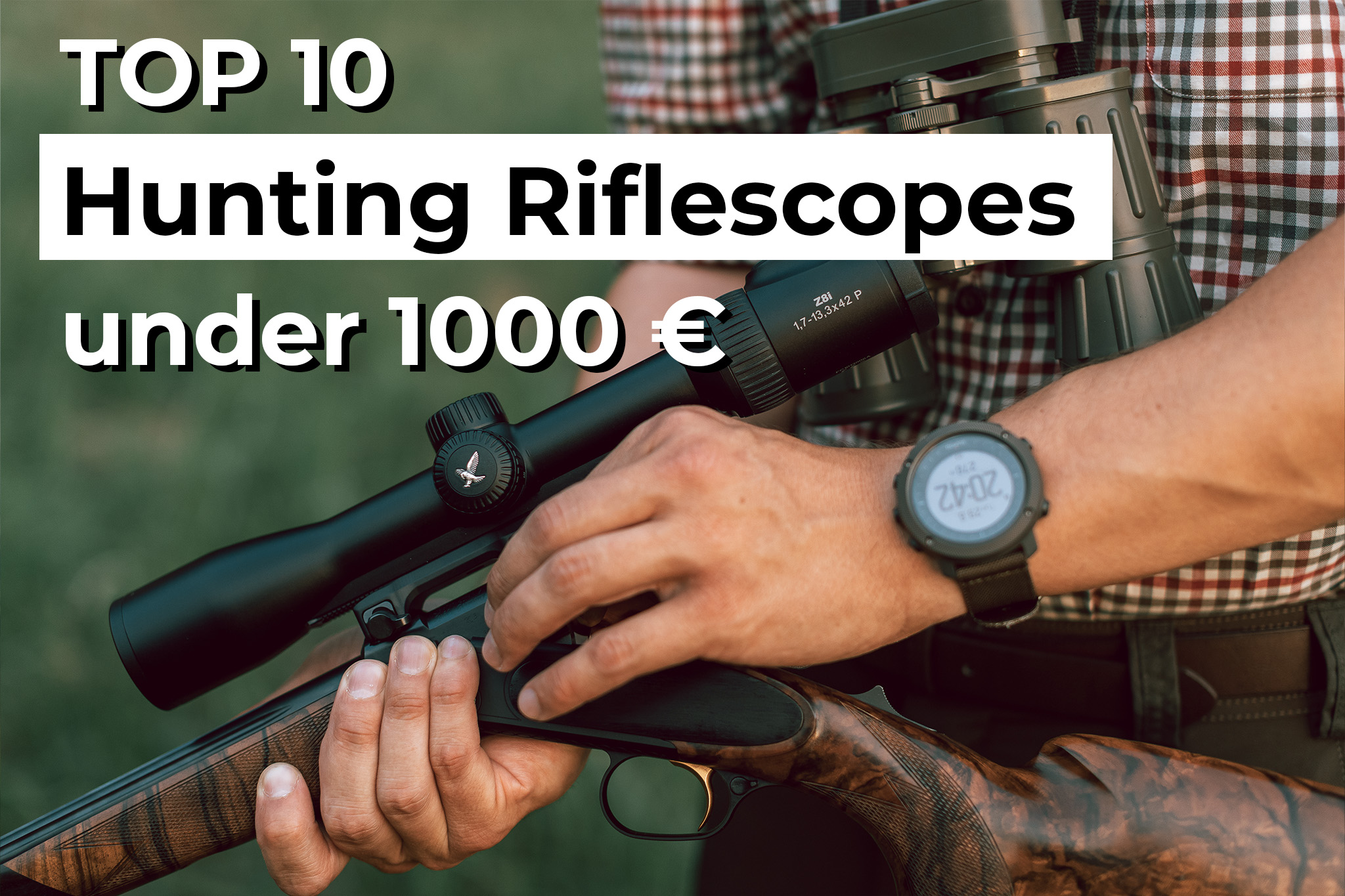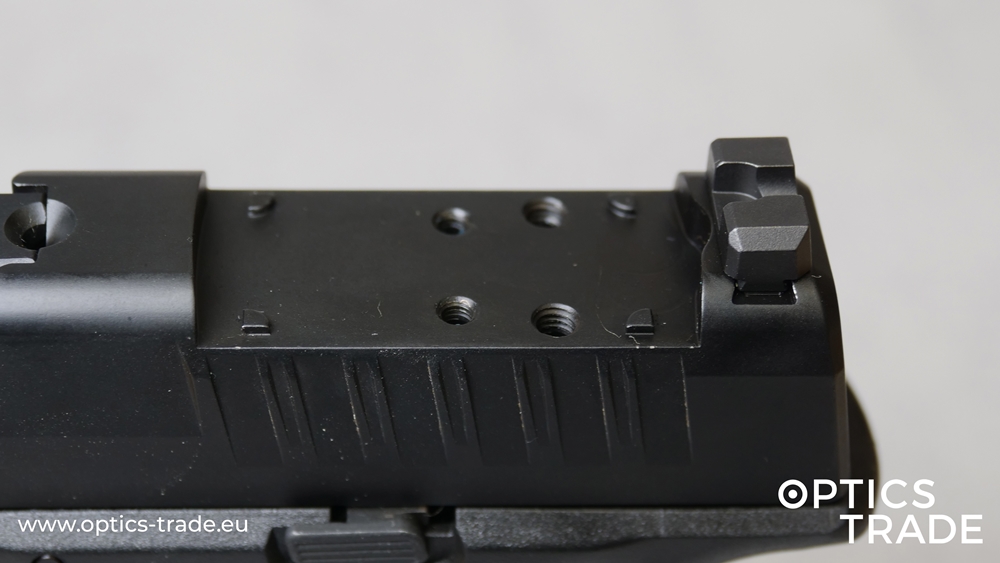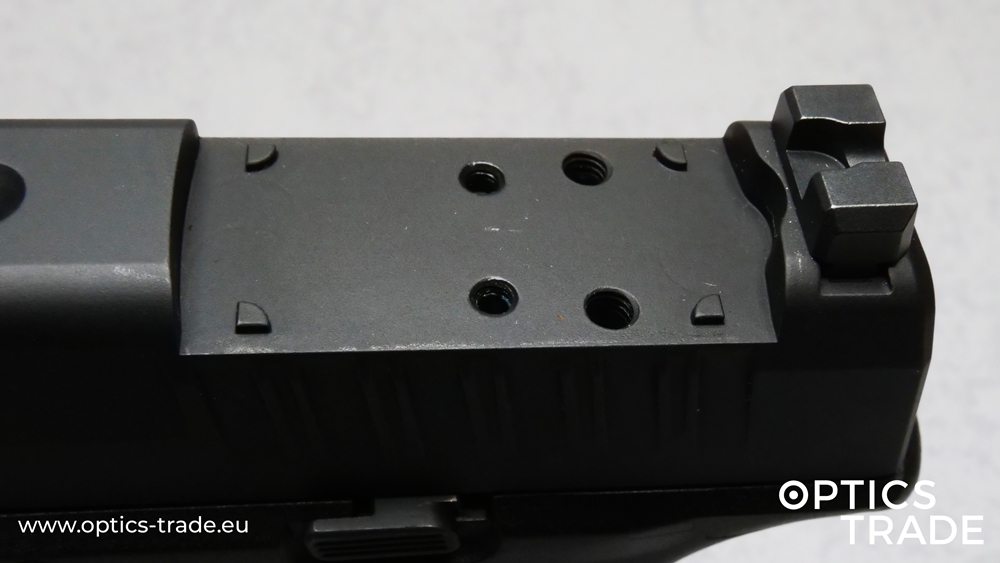Welcome to Optics Trade debates. In each episode, we talk about a different topic and try to answer the most common questions we receive about it. Today we are going to talk about turret types in riflescopes.
The main categories are: Capped/Hunting turrets, Target turrets which are also capped but much higher, BDC turrets (Bullet Drop Compensation turret) and Tactical turrets.
Capped/Hunting turrets are really low profile. They are covered with caps so that they are protected against the elements. They are usually finger adjustable, which is meant to be done once a year when the rifle is being zeroed. They are usually found on scopes that are meant for hunting. The click values are usually ¼ MOA which means 1 cm.
Target turrets are similarly capped, but they are much higher and easier to manipulate. These turrets are meant to be turned around a lot. They’re on scopes meant for sports shooting, which means extremely high magnification, really fine clicks, very simple reticles and are made to be easily adjustable. The click values are usually 1/8 MOA which means 3.5 mm on 100 m.
The BDC turrets are similar to tactical turrets because they have no caps and you can manipulate them immediately. The numbers that are on the turrets tell you at which distance you are able to shoot. The clicks are not engraved on the turret but the numbers for the distances are, so these turrets always need to be paired together with the ballistic curve. Usually, the positions of the numbers are adjustable, but with Zeiss scopes, you get 9 really nice rings, from which you chose the right one for your caliber. These are getting more and more popular with long range hunters on scopes with high magnification, because of their ease of use. Most of them offer a lock function and feature zero stop.
Tactical turrets are similar to the BDC turrets, but they normally have engraved numbers for clicks. One means either one MOA or 1 cm per 100 m. With this type of turrets you need to know a little bit more about ballistics, so they are usually found on tactical scopes, where the users are more professional and invest a lot of time into shooting.
You can find different turret types in different categories of riflescopes. Hunting scopes usually have small hunting capped turrets or a small BDC turret. Some target scopes also feature tactical turrets. And you can also find BDC turrets on tactical scopes.
We would like to thank you for your time. In case we did not answer all the questions regarding this topic, please leave a comment below or send an e-mail to us. If you found this video useful, please subscribe to our channel.
Explanation of the term on our website:
Turrets are easily said rotatable buttons on rifle scopes which you can spin it left or right to move the reticle in the scope. This way you achieve a match of point of impact and scope reticle. This is called zeroing. The market offers different rifle scopes for different purposes and they have also different types of turrets. Determination, how will turrets look like depends on rifle scopes purpose, price, manufacturer and country of origin.
Every single movement made with the turret produces a »click« sound. Usually, 1 click on European rifle scopes moves the hit on target for 1 cm at 100 m range (0.1 MRAD / MIL). On American, Japanese and Chinese scopes 1 click moves the hit on the target for ¼ MOA (minute of angle) which is 7 mm at 100 m range.
There are 4 different types of turrets on the market
Target turrets are known as the most precise type. They are the best choice for the precise shooters, due to very small and precise adjustments. Usually they are available in 1/4 or 1/8 MOA (1 MOA = 0.29 MRAD = 2,9 cm / 100 m) or in 0,05 Mrad (1Mrad =10cm/ 100m). They are protected with caps and usually, they are very high for easier manipulation.
BDC stands for Bullet Drop Compensation. BDC turrets offer the easiest way to dial a number of clicks to compensate for bullet drop when shooting at longer distances. These turrets are usually found on hunting scopes for long-range hunting. These turrets are very similar to Tactical turrets; however, the main difference is they don’t have numbers for clicks engraved on them, but only numbers for the corresponding distances. On such turrets, 1 stands for 100m, 2 for 200m, 3 for 300m, and similar. Color dots, instead of numbers, are also very common; however, in such cases, the hunter must memorize which color corresponds to a given distance to the target.
BDC turret can only match one ballistic trajectory, and BDC turrets are always suitable for use with only one ammunition. When a shooter changes the ammunition in his rifle, the BDC turret must be changed to correspond to a new ballistic curve.
The best modern BDC turrets also have an additional function of a Zero Stop (the turret doesn’t rotate under the zeroing distance of the rifle) and locking mechanism.
Scopes meant for tactical applications have uncovered tactical turrets that offer easy control over reticle elevation and windage. Click values on such turrets are visible and a number of clicks for bullet drop compensation can be dialed fast and easy. Such turrets are especially useful in tactical situations where, usually, every target is at a different distance and not more than a couple of shots are shot at each target. Such situations demand continuously changing of reticle position in the scope elevation and windage range. Turrets covered with caps are unpractical in such situations.
Since the main purpose of tactical turrets is easy and often changing of elevation and windage position of the reticle, such turrets usually have numbers of clicks (or elevation in MOA or MRAD) clearly written on them. Resetting the turret to 0 when the rifle is zeroed is also a standard feature on such turrets. Tactical turrets are also distinguished from other types of rifle scope turrets, as the number of turns plays an important role in their usability.
Tactical turrets on basic scopes, usually, have a high number of turns from one extreme of the elevation/windage range to another. Such turrets are called multi-turn turrets. However, tactical turrets on more advanced tactical scopes have a limited number of turns. The most common are single turn – ST and double turn – DT turrets. Double turn type turrets also have an indicator, which clearly shows in which turn the turret is located. Such advanced tactical turrets are especially useful when there is no room for error when dialing a number of clicks for proper elevation adjustment.
Advanced ST and DT tactical turrets often have a Zero Stop – ZS functionality, so when a user wants to go back to turret position at which rifle is zeroed, the turret rotation is stopped at that setting.
Capped turrets are the most usual turret type on hunting scopes, where the turret covers are removed only on rare occasions when the scope is zeroed. Due to the caps, the turrets are well-protected against water, dust, and unintentional damage. On most of the hunting scopes and on some wide-angle tactical scopes, the turrets under the caps have a low height. On target scopes, this is different, since most turrets are high and easy to dial. In modern rifle scopes, turrets caps also hold the spare battery for the illumination.
Turrets on target scopes are also covered with caps; however, such scopes have much higher turrets than hunting scopes, which also have turrets covered with caps. The reason for such difference is that turrets on target/ sports scopes are dialed often when shooters shoot on different distances. However, during transportation or when shooting in the rain, high target turrets still get protected with caps.
Products mentioned:
Capped/Hunting turrets: https://www.optics-trade.eu/en/riflescopes/shopby/turret_type-capped.html
Target turrets: https://www.optics-trade.eu/en/riflescopes/shopby/turret_type-capped_target.html
BDC locking turrets: https://www.optics-trade.eu/en/riflescopes/shopby/turret_type-bdc_lockable.html
Tactical Turrets: https://www.optics-trade.eu/en/riflescopes/shopby/turret_type-tactical.html




